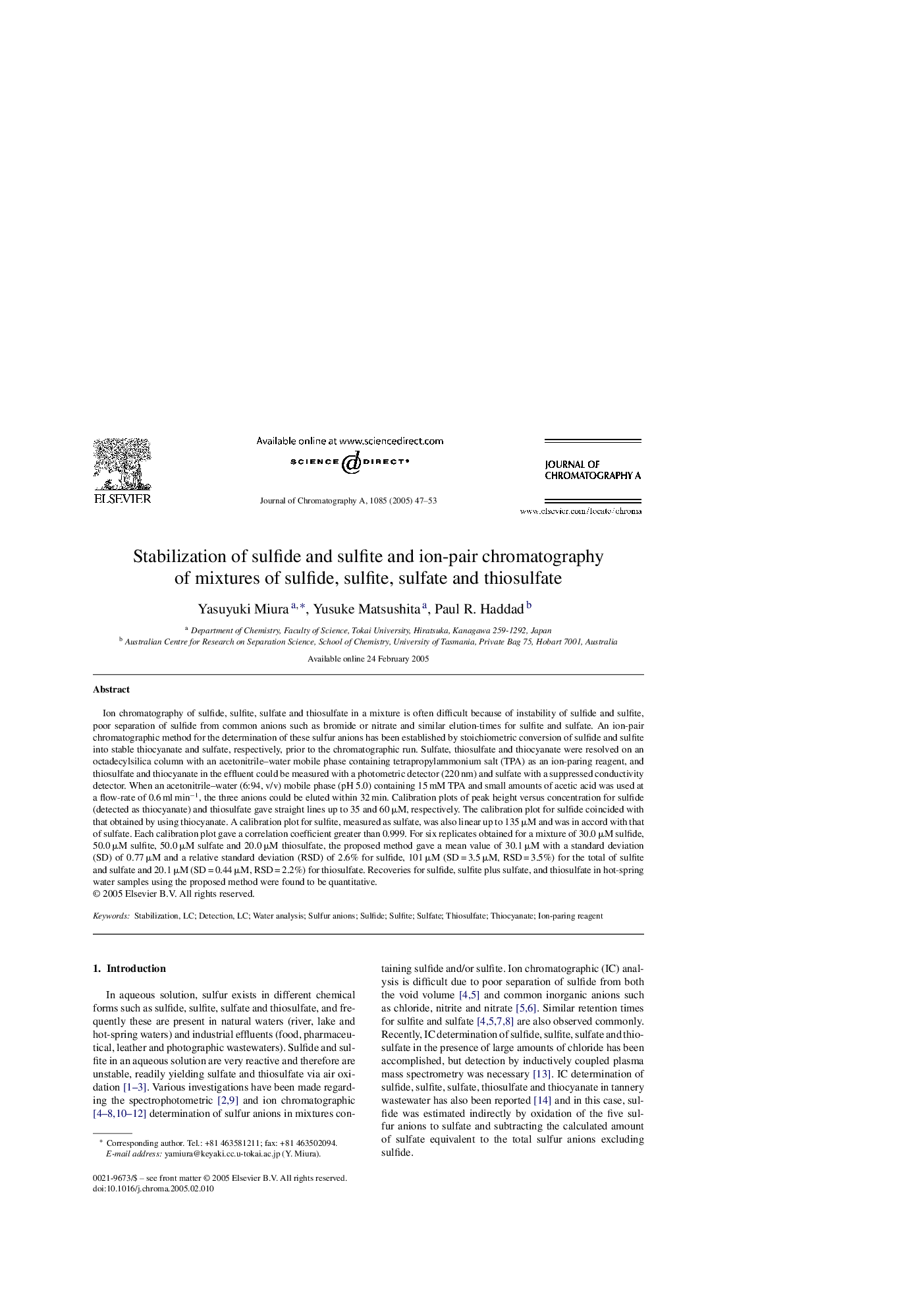| Article ID | Journal | Published Year | Pages | File Type |
|---|---|---|---|---|
| 10547950 | Journal of Chromatography A | 2005 | 7 Pages |
Abstract
Ion chromatography of sulfide, sulfite, sulfate and thiosulfate in a mixture is often difficult because of instability of sulfide and sulfite, poor separation of sulfide from common anions such as bromide or nitrate and similar elution-times for sulfite and sulfate. An ion-pair chromatographic method for the determination of these sulfur anions has been established by stoichiometric conversion of sulfide and sulfite into stable thiocyanate and sulfate, respectively, prior to the chromatographic run. Sulfate, thiosulfate and thiocyanate were resolved on an octadecylsilica column with an acetonitrile-water mobile phase containing tetrapropylammonium salt (TPA) as an ion-paring reagent, and thiosulfate and thiocyanate in the effluent could be measured with a photometric detector (220 nm) and sulfate with a suppressed conductivity detector. When an acetonitrile-water (6:94, v/v) mobile phase (pH 5.0) containing 15 mM TPA and small amounts of acetic acid was used at a flow-rate of 0.6 ml minâ1, the three anions could be eluted within 32 min. Calibration plots of peak height versus concentration for sulfide (detected as thiocyanate) and thiosulfate gave straight lines up to 35 and 60 μM, respectively. The calibration plot for sulfide coincided with that obtained by using thiocyanate. A calibration plot for sulfite, measured as sulfate, was also linear up to 135 μM and was in accord with that of sulfate. Each calibration plot gave a correlation coefficient greater than 0.999. For six replicates obtained for a mixture of 30.0 μM sulfide, 50.0 μM sulfite, 50.0 μM sulfate and 20.0 μM thiosulfate, the proposed method gave a mean value of 30.1 μM with a standard deviation (SD) of 0.77 μM and a relative standard deviation (RSD) of 2.6% for sulfide, 101 μM (SD = 3.5 μM, RSD = 3.5%) for the total of sulfite and sulfate and 20.1 μM (SD = 0.44 μM, RSD = 2.2%) for thiosulfate. Recoveries for sulfide, sulfite plus sulfate, and thiosulfate in hot-spring water samples using the proposed method were found to be quantitative.
Related Topics
Physical Sciences and Engineering
Chemistry
Analytical Chemistry
Authors
Yasuyuki Miura, Yusuke Matsushita, Paul R. Haddad,
